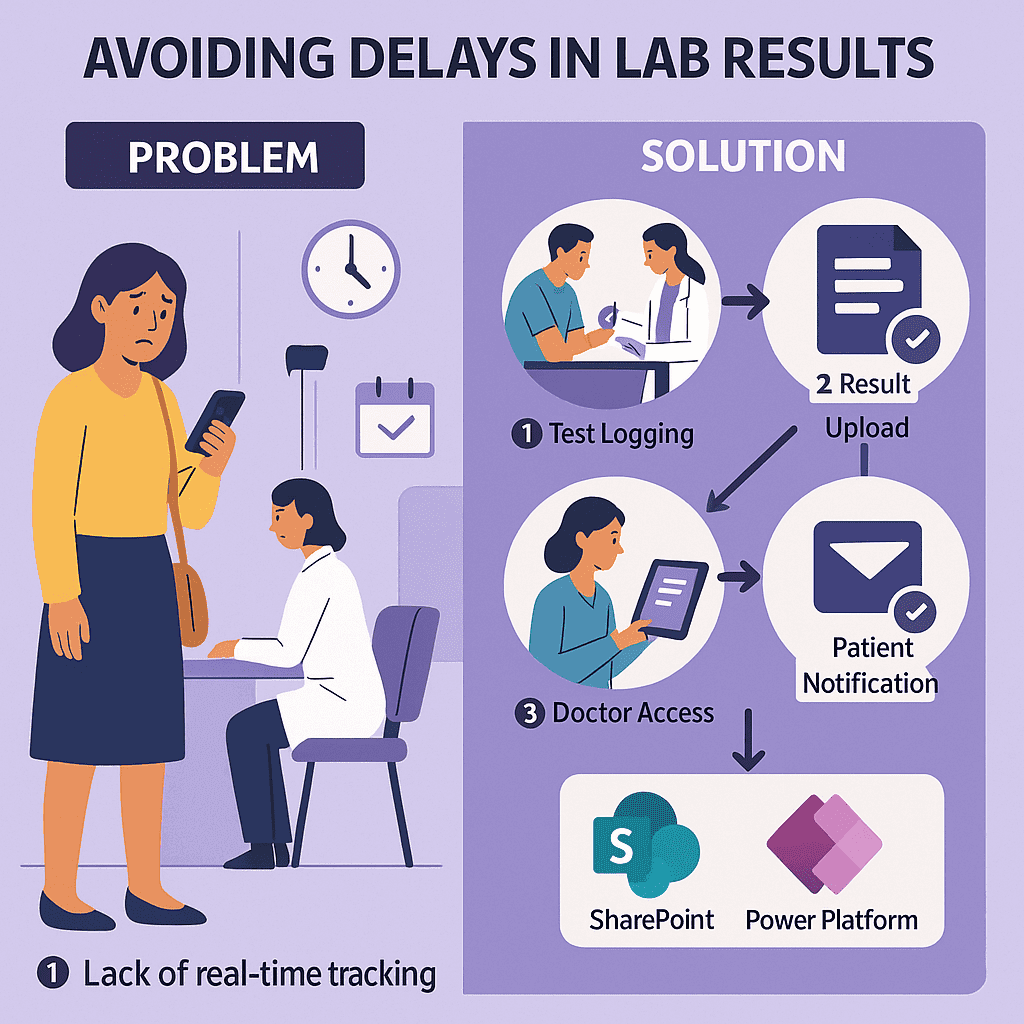Introduction
Picture this: A patient is referred for a routine blood test. She visits the hospital lab and is told the result will be ready in a day. Based on that timeline, she books a follow-up appointment with her doctor. But when she returns, the result isn’t ready due to an unforeseen delay. Unfortunately, her doctor is heading out for a week-long medical conference. The appointment is rescheduled, the correct treatment is delayed and she’s already travelled a long distance for nothing.
This avoidable delay is all too common in hospitals still relying on manual or fragmented workflows.
Problem: Lack of real time tracking
Hospitals often face delays in result delivery because of:
- No real-time tracking or update on test status
- Lack of integration between lab, doctor, and patient communication channels
- Missed handoffs, especially when staff are unavailable
- Simple scheduling disruptions snowball into serious treatment delays
The SharePoint + Power Platform Solution
Microsoft SharePoint and Power Platform provide a practical alternative to full system overhauls. Hospitals can now completely automate how lab results are processed, tracked, and shared.
How it works:
- Power Apps for Test Logging: As soon as the sample is collected, lab staff enter details into a SharePoint-connected Power Apps form.
- Result Upload & Status Tagging: When the test is complete, the technician updates the SharePoint list and uploads the report. Status is marked as “Ready.”
- Automated Doctor Access: Doctors can securely access the result from anywhere using SharePoint. No delays, even if they’re off-site.
- Patient Notification via Power Automate: As soon as results are marked ready, patients are notified automatically by email or WhatsApp.
Why SharePoint Instead of a New HMS?
Replacing an entire Hospital Management System (HMS) is expensive, time-consuming, and risky. Here’s why SharePoint integration is smarter:
- Lower Cost: Leverages existing Microsoft 365 licenses and infrastructure
- Faster Implementation: Modular rollout without full system migration
- Custom Fit: Only digitize the gaps, keep what already works
- User Familiarity: Staff are often already familiar with Microsoft tools
Addressing Real Concerns
1. Integration with Existing Systems
SharePoint and Power Platform can connect to existing HMS/EHR/EMR databases using APIs, SQL connectors, or Power Automate flows-ensuring smooth data exchange without needing a system replacement.
2. Scalability & Compliance
- Scalable Architecture: Built on Microsoft cloud, it handles high data and user volumes across multiple departments.
- Compliance Ready: SharePoint supports HIPAA and GDPR compliance with role-based access, audit trails, and data encryption.
3. Training & Change Management
Digitizing workflows requires training, yes but:
- Power Platform interfaces are intuitive
- Microsoft offers extensive training resources
- Rollouts can be staged by department to ease adoption
Conclusion
The cost of a delayed lab result isn’t just frustration, it can mean delayed treatment, poor outcomes, and lost trust. But hospitals don’t need a complete HMS overhaul to solve this.
With SharePoint and Power Platform, they can digitize key workflows, improve communication, and deliver results literally and figuratively without disrupting what already works.




